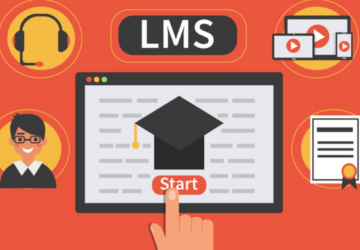Introduction
The Internet of Things has been one of the biggest and latest innovations, transforming how many businesses operate today. IoT platforms are an essential component of the IoT ecosystem, which has an estimation to grow at a CAGR of 24.77% from 2022 to 2027, with a market size of USD 16,010.78 million, as per the latest report by Technavio.
Businesses can benefit significantly from IoT platforms, such as improved operational efficiency, lowered development expenses, and increased productivity. Despite the growing popularity of IoT platforms, many individuals still lack a clear understanding of their nature and the benefits they offer to businesses.
In this blog, we will understand IoT platforms in details, their key components, their benefits, future of IoT platforms, and the best practices for selecting IoT platforms in 2023.
What is an IoT Platform?
An IoT platform is a comprehensive SaaS software designed to manage and connect IoT devices on a large scale. Its primary function is handling millions of device connections simultaneously while ensuring seamless configuration for machine-to-machine communication.
The IoT platform simplifies the complicated infrastructure of IoT, enabling businesses to focus on their core operations and product development. In essence, it is a tool that manages and connect IoT device, making the entire process more efficient and manageable.
Components of an IoT Platform
There are several components of IoT platforms, each designed to cater to specific requirements and use cases. The key components of the IoT platforms that contribute to providing IoT solutions are:
1.Things or Devices
The physical objects that are being tracked are called Things or Devices. These devices are fitted with smart sensors to collect data from the device and send it to the gateways. The data collected can have varying levels of complexity, ranging from a simple temperature monitoring sensor to a complex full video feed. Some commonly used sensors are:
- Temperature sensors and thermostats
- Moisture sensors
- Light intensity detectors
- Proximity detection
- Moisture level detection
2.Connectivity
Connectivity is an essential component of any IoT ecosystem. A connectivity medium is necessary to transfer the collected data from sensors to a cloud infrastructure.
The sensors can be connected to the cloud through several communication and transport options such as cellular networks, satellite networks, Wi-Fi, Bluetooth, wide-area networks (WAN), and low-power wide area networks (LPWAN).
Each option has its own set of specifications and trade-offs, including power consumption, range, and bandwidth. Therefore, selecting the most suitable connectivity option is crucial for providing IoT solutions.
3.Cloud
Cloud computing refers to a network of servers connected to each other and constantly operating through the internet. It provides a means to store data gathered from sensors installed in various devices or things. The core responsibility of the IoT cloud is to collect, process, manage, and analyze the huge amount of data collected.
Industries and services can remotely access the data through Device Management IoT platforms enabling them to make important decisions at any given time.
4.Analytics
Analytics is the process of transforming data into actionable insights that can be analyzed and interpreted to improve the performance of IoT solutions.
Device management IoT platforms enable data collection, processing, and analysis from connected sensors and devices. This raw data can include information such as temperature, humidity, and location, among others, and is collected in real time from various IoT devices.
However, raw data alone is not always useful without interpretation and processing. Device management IoT platforms transform raw data into actionable insights. These information can be further analyzed and interpreted to optimize use and performance of IoT solutions.
Benefits of IoT Platforms
IoT Solutions have become a game-changer for businesses worldwide, providing numerous benefits across industries. With the advent of smart sensors, cloud computing, and machine learning technologies, IoT platforms have enabled businesses to gather vast amounts of data, gain valuable insights, and make informed decisions.
There are several benefits of IoT platforms, including –
- Scalability: Remote IoT device platforms can manage large numbers of devices simultaneously, allowing organizations to scale their IoT deployments easily
- Smooth Communication: IoT platforms allow for seamless integration of devices, software, and services, enabling efficient communication and data sharing between them
- Security: IoT platforms offer advanced security features, such as encryption and authentication, to ensure data privacy and protection against cyber threats
- Data Management: IoT platforms provide tools for managing large amounts of data generated by connected IoT devices, enabling businesses to analyze and utilize this data to improve their operations
- Flexibility: An IoT device management platform allows organizations to deploy, configure, monitor, update, and manage a large number of IoT devices remotely. Remote IoT Device Platforms enable businesses to operate remotely, providing flexibility and saving costs
- Efficiency: IoT platforms streamline the management of IoT devices, reducing operational costs and increasing efficiency
- Innovation: IoT platforms enable businesses to develop new and innovative products and services that can transform industries and create new business opportunities
- Enhanced Customer Experience: IoT Monitoring platforms can collect and analyze data from various connected IoT devices and provide businesses with valuable insights about customer behavior, preferences, and needs, which can help improve customer experience
Best Practices for Selecting an IoT Platform in 2023
Finding an IoT platform is no longer a difficult task, but choosing the one that’s best suited for your business can be a complicated process. This is due to the growing number of options and many IoT Solution companies claiming to offer the best IoT platforms. Selecting the best IoT platform is crucial for businesses because it can impact their operational efficiency and customer experience.
When selecting an IoT platform, you should not only look for the technical capabilities of their IoT solutions. You should also understand their operational capabilities and how well they can connect with your business strategy.
In 2023, there are some best practices to consider when choosing an IoT platform, which include:
1.Security and Data Privacy
In an IoT ecosystem, where a large number of devices and systems are interconnected, security is of paramount importance. Connected IoT devices and networks are susceptible to cyber threats, data breaches, and hacking. Therefore, an IoT platform should have robust security features that ensure the integrity, confidentiality, and availability of data.
It should also be able to authenticate and authorize users, devices, and applications that access the network. Advanced security features such as encryption, firewalls, intrusion detection and prevention, and vulnerability management should be incorporated into the platform.
2.Compatibility and Interoperability
Compatibility and interoperability are essential to ensure seamless data exchange and communication between devices and systems, enabling efficient and effective decision-making.
An IoT platform should be compatible with various devices, sensors, and gateways. It should also be able to integrate with third-party systems such as cloud platforms, data analytics tools, and enterprise resource planning (ERP) systems.
3.Scalability and Flexibility
Scalability and flexibility are crucial for future-proofing the IoT ecosystem and ensuring that the platform can adapt to evolving business needs and technological advancements.
An IoT platform should be able to scale to handle a large number of devices and data volumes. It should also be flexible enough to accommodate changes in requirements, such as adding new devices, updating firmware, and deploying new applications.
The Future of IoT Platforms
The future of IoT platforms looks exciting, with the constant and ever-growing capabilities of IoT solutions. By 2030, the number of IoT devices is expected to exceed 24 billion. In recent years, businesses across industries have widely adopted IoT solutions to improve productivity and reduce operational costs.
Advancements in IoT technology are expected to be driven by edge computing, AI and machine learning, and 5G networks. These technologies will enable IoT platforms to process data faster, make better predictions, and offer more advanced automation and control capabilities. Ultimately, these developments are expected to make IoT platforms more intelligent, efficient, and effective, creating new business opportunities in various industries.
Conclusion
The Internet of Things (IoT) has been changing the world in a way we had never imagined, providing tremendous benefits to businesses. An IoT platform is a vital element in an IoT ecosystem that facilitates the management and connection of IoT devices based on the unique needs of a business.
IoT platforms have several benefits, including streamlining business operations, boosting productivity, and reducing costs. However, selecting the right IoT platform in 2023 can be challenging with the availability of many IoT solution companies in the market. It is crucial to consider factors such as scalability, security, and interoperability when making a decision.
Choosing the right IoT solution company, like akenza.io, for your IoT solution can create a big impact on your business success. As the IoT landscape expands, the demand for advanced IoT platforms will grow. The future of IoT platforms looks promising, with the potential to revolutionize and create new business opportunities.
Frequently Asked Questions
Q: What does an IoT platform do?
A: An IoT platform enables businesses to manage and connect IoT devices to the cloud, collect and analyze data, and automate processes. It allows for the remote management of devices and provides real-time insights that businesses can use to make informed decisions.
Q: What are the benefits of using an IoT device management platform?
A: An IoT device management platform can help organizations streamline device management processes, improve device security and compliance, reduce downtime and maintenance costs, and gain insights into device performance and usage.
Q: What are some benefits of using remote IoT device platforms?
A: The benefits of using remote IoT device platforms include improved device management, enhanced security, and reduced operational costs. With a remote platform, businesses can easily monitor, manage and connect IoT devices across multiple locations without on-site support.
Q: How do IoT monitoring platforms work?
A: IoT monitoring platforms collect data from connected IoT devices and present it in an organized and meaningful way for analysis. It allows users to monitor device performance and detect real-time anomalies or issues.
Q: What is a device management IoT platform?
A: A device management IoT platform is a software solution designed to manage and monitor many IoT devices from a centralized location. It allows businesses to remotely configure and manage their IoT devices, update software and firmware, and monitor device health and performance.
Device management IoT platform transforms the raw data collected from sensors into actionable insights to improve the decision-making and performance of the organization.
Q: What are some famous IoT Solution companies?
A: There are several renowned IoT solution companies, such as Akenza.io, Amazon AWS IoT Core, Microsoft Azure IoT Suite, Particle cloud, and Cisco IoT Cloud Connect. These IoT solution companies provide a variety of features and capabilities that enable organizations to develop and handle their IoT solutions effectively.








